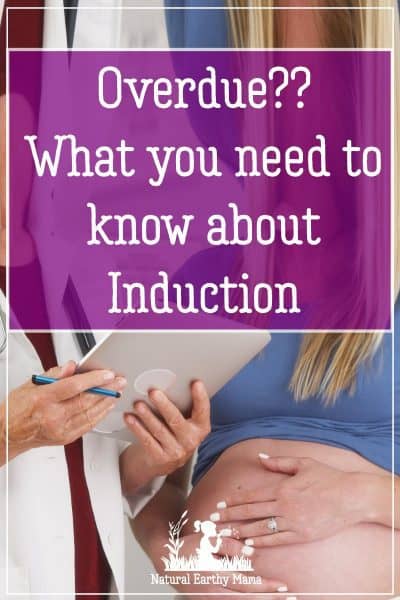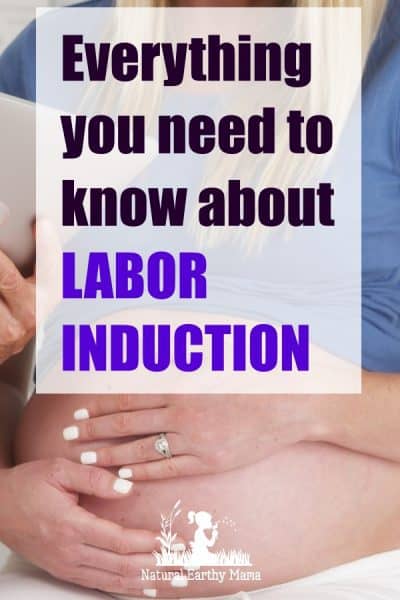 Maybe you’re tired of being pregnant and sick of being so uncomfortable. 9 months can seem like forever when you’ve been waiting for this amazing baby growing inside of you, and you really don’t want to wait any longer.
Maybe you’re tired of being pregnant and sick of being so uncomfortable. 9 months can seem like forever when you’ve been waiting for this amazing baby growing inside of you, and you really don’t want to wait any longer.
Is labor induction crossing your mind? Is your care provider starting to suggest inducing your labor for non medical reasons? Here we are going to look at labor induction risks and benefits for the overdue woman.
Please read: This information is provided for educational purposes only and is not intended to treat, diagnose or prevent any disease. We encourage you to make your own health care decisions in partnership with a qualified health care professional.
This post contains affiliate links, this means at no extra cost to you, we make a commission from sales. Please read
our Disclosure Statement
The evidence for not inducing labor
There is growing evidence that babies should be left well alone until they decide they should arrive. This same evidence has led to the definition of ‘full term” being changed from 37+ weeks to 38+ weeks and the definition of over-due or “post-term” to be moved to the full 42 weeks (King, V., Pilliod, R., & Little, A. (2010). Rapid review: Elective induction of labor. Portland: Center for Evidence-based Policy.).
What does this mean for you and your baby? Why did they bother changing the definition at all?
One recent study shows babies at 37 to 38 weeks are more likely than those born later to need time in the NICU, mechanical ventilation and IV fluids (1). In Australia 25% labors are induced, New Zealand’s rate is very similar . The most cause for induction is a ‘post date pregnancy’.
What is a post dates pregnancy?
• Term (as in a ‘normal’ and healthy gestation period): is from 38 weeks to 42 weeks.
• Post dates: the pregnancy has continued beyond the decided due date ie. is over 40 weeks.
• Post term: the pregnancy has continued beyond term ie. 42+ weeks
Conditions that usually result in labor induction
Preterm prelabor rupture of the membranes (PPROM)
In this situation, the membranes break on their own before pregnancy week 37, and labor has not begun. Eight studies with a combined total of 1,230 babies of women with ruptured membranes between 34 and 37 weeks of pregnancy found no advantages for induction compared with waiting for labor with respect to C-section or infection or breathing problems in babies.
RELATED POST: Natural induction options
Twin pregnancy
A single, small randomized controlled trial compared routine induction at 37 weeks with waiting for labor and found no differences in important health outcomes.
Gestational diabetes requiring insulin
One trial looked at the outcomes of 200 women randomized to either be induced at 38 weeks or wait for labor. Those who waited were more likely to have large babies. There were no differences in health outcomes for the mothers or babies.
Intrauterine growth restriction (IUGR) at term
In this situation, the baby appears to be smaller than we would expect at or beyond 37 weeks of pregnancy. Two trials involving a combined 683 women found no benefit or harm to induction for suspected IUGR at term.
Oligohydramnios (too little amniotic fluid)
A single, small randomized controlled trial compared induction of labor with watching fetal well-being closely until 42 weeks for women with suspected low amniotic fluid at 41 weeks.
The women were healthy and did not have other risk factors or complications. The study found no difference in maternal or newborn outcomes
RELATED POST: How to have a pain-free labor
Why don’t we wait for labor to start naturally?
Despite the research, many providers continue to recommend induction because
Myth: After 42 weeks the placenta starts to “shut down”
There is no evidence to support this notion, as long as the placenta is healthy and functioning and the baby is growing, this is not a given thing. Many placentas continue to function beyond 42 weeks.
Myth: Baby’s head will grow too big to fit out
There is no evidence to support this theory and babies are pretty good at finding their way out of their mothers expandable pelvis.
They believe the baby will get too big (suspected macrosomia). According to a systematic review of several studies involving more than 3,700 women, inducing labor when the provider suspects that the baby is large does not improve neonatal (baby’s) outcomes and appears to increase the chance that the woman will have a C-section.
Risks of labor induction
Elective induction before 39 weeks increases risks for babies. These risks include breathing problems, infection and admission to a neonatal intensive care unit (NICU).
Much brain growth and development happens in the last weeks of pregnancy, and babies born even a few weeks before their due dates have more learning and behavioral problems than babies born after 39 weeks.
Elective induction before 41 weeks increases the chance of having a C-section if the cervix has not already softened and started to open on its own, especially in first-time mothers. Interestingly, using medications or procedures to soften the cervix does not decrease the chance of a C-section.
Women in induced labor are more likely to ask for an epidural for pain relief than women who go into labor on their own. Epidurals have their own risks including a higher risk of c-section or instrument delivery.
RELATED POST: Making an effective birth plan
Risks of letting your pregnancy go post dates
To pretend their are no risks associated with prolonged pregnancy is not helpful for women trying to make decisions about their options.
It is difficult to say at what point a woman has been pregnant for too long. In most cases, medical examinations don’t detect any problems even days after the estimated due date.
Once a pregnancy hits 42 weeks there is a slow but steady increase in the risk of still birth in the baby. Also the risk of aspiration of meconium and subsequent lung infections that go with this increase (2).
These general risks should be part of the information a woman uses to decide what is best for her.
Before labor begins the uterus and cervix need to make physiological changes ready to respond to contractions. It is now thought that the baby is the controller of the labor ‘on’ switch. So, the baby signals to the mother that he/she is ready, oxytocin is released and labor begins.
Before jumping at the chance of “getting this baby out of here” please do some reading, and find out the facts about induction first.
I had and induced birth, and I have had 2 natural ones. I would take the natural one hands down every time. But there is a time and a place for induction (my first labor I was very unwell with pre-eclampsia) and they can be life saving, but they are not without risk.
Talk with your midwife and see what they suggest, there may be some more gentle natural options you can try first.






